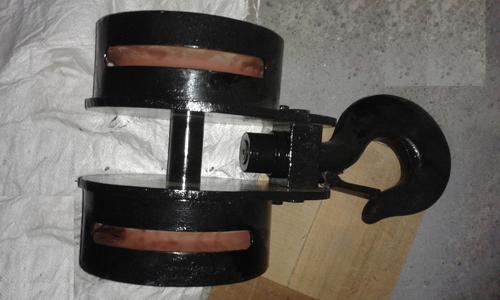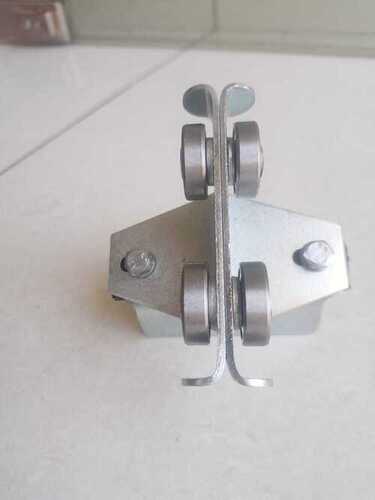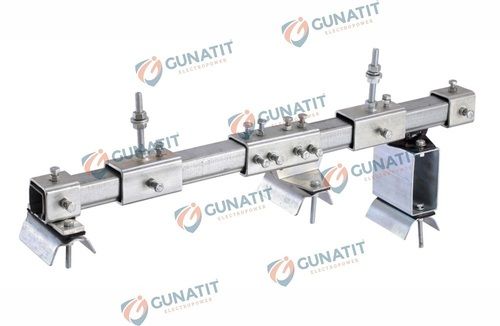
X
Crane Hook Price And Quantity
- 1 Piece
Crane Hook Trade Information
- MUNDRA PORT
- Cash on Delivery (COD), Cheque
- 5 Piece Per Week
- 5-8 Days
- Yes
- Sample costs shipping and taxes has to be paid by the buyer
- PACKING IN CARTOON BOX
- North America, Middle East, Africa
- All India
- AN ISO 9001 : 2008 CERTIFIED COMPANY
Product Description
A crane hook is a fundamental component of a crane and is used for lifting and moving heavy loads. Cranes are mechanical devices equipped with a hoist, wire ropes, or chains, and a hook for lifting and lowering loads. The crane hook is typically attached to the crane's lifting mechanism and is used to connect with the load.
Here are some key features and components of a crane hook:
1. Shape and Design:
Crane hooks come in various shapes and designs, depending on the specific application. The most common type is the C-shaped hook, but there are also double hooks, single hooks, and specialized hooks for specific purposes.
2. Materials:
Crane hooks are usually made of high-strength materials such as alloy steel to ensure durability and safety. The materials used are chosen based on factors like the weight capacity of the crane and the type of loads it will be handling.
3. Latch Mechanism:
Many crane hooks are equipped with a latch or safety mechanism to prevent the load from accidentally slipping off the hook. This latch can be either spring-loaded or manually operated.
4. Swivel:
Some crane hooks are designed with a swivel feature, allowing the load to rotate freely during lifting. This can be useful for certain applications where the load needs to be positioned precisely.
5. Capacity Markings:
Crane hooks are usually marked with their weight capacity. It's crucial to adhere to these markings to ensure safe lifting operations and avoid overloading the crane.
6. Inspection:
Regular inspection of crane hooks is essential to identify any signs of wear, damage, or fatigue. Cracked or damaged hooks can pose a serious safety risk and should be replaced promptly.
Applications of Crane Hook:
1. Construction Industry:
Lifting and moving heavy construction materials such as steel beams, concrete blocks, and prefabricated structures.
2. Manufacturing Plants:
Handling and transporting heavy machinery, equipment, and raw materials within manufacturing facilities.
3. Shipbuilding and Maritime Industry:
Lifting and positioning ship components, containers, and other heavy materials during the construction and maintenance of ships.
4. Warehousing and Logistics:
Loading and unloading heavy pallets, crates, and containers in warehouses and distribution centers.
5. Mining Operations:
Lifting and transporting mined materials, machinery, and equipment in mining sites.
6. Power Generation:
Handling heavy components and equipment during the construction and maintenance of power plants.
7. Oil and Gas Industry:
Lifting and moving heavy equipment, pipes, and structures in oil refineries, drilling sites, and petrochemical plants.
8. Agriculture:
Lifting and transporting large and heavy agricultural equipment, such as tractors and irrigation components.
9. Automotive Industry:
Handling and positioning heavy vehicle components, engines, and chassis during the manufacturing process.
10. Renewable Energy Projects:
Lifting and installing components for wind turbines, solar panels, and other renewable energy infrastructure.
11. Infrastructure Development:
Lifting and placing precast concrete elements, steel girders, and other construction materials for bridges, highways, and tunnels.
12. Aerospace Industry:
Lifting and moving aerospace components, aircraft parts, and other heavy materials during manufacturing and assembly processes.
13. Entertainment Industry:
Rigging and lifting stage equipment, lighting fixtures, and other heavy components during the setup of concerts, events, and film productions.
14. Emergency Response:
In disaster recovery situations, crane hooks may be used for lifting and moving debris, assisting in rescue operations, and handling heavy equipment.
15. General Material Handling:
Various industries use crane hooks for day-to-day material handling tasks, including loading and unloading trucks, positioning materials on construction sites, and more.
Frequently Asked Questions (FAQs):
Q. What is a crane hook used for?
Ans: A crane hook is used for lifting and moving heavy loads in various industries, including construction, manufacturing, shipping, and material handling.
Q. How is a crane hook attached to the crane?
Ans: The crane hook is typically attached to the crane's lifting mechanism, which may involve a hoist, wire ropes, or chains. The connection is designed to securely lift and lower loads.
Q. What are the different types of crane hooks?
Ans: Crane hooks come in various types, including C-shaped hooks, double hooks, and single hooks. The specific type of hook used depends on the application and the nature of the load.
Q. Are crane hooks made of a specific material?
Ans: Yes, crane hooks are typically made of high-strength materials such as alloy steel to ensure durability and safety. The material chosen depends on factors like the weight capacity of the crane and the type of loads it will be handling.
Q. Do crane hooks have a weight capacity?
Ans: Yes, crane hooks are marked with their weight capacity. It is crucial to adhere to these markings to ensure safe lifting operations and avoid overloading the crane.
Q. What is the purpose of the latch on a crane hook?
Ans: The latch on a crane hook serves as a safety mechanism to prevent the load from accidentally slipping off the hook during lifting. It can be either spring-loaded or manually operated.
Q. Do all crane hooks swivel?
Ans: No, not all crane hooks swivel. Some hooks are designed with a swivel feature, allowing the load to rotate freely during lifting. This can be useful for certain applications where precise positioning is required.
Q. How often should crane hooks be inspected?
Ans: Crane hooks should be inspected regularly for signs of wear, damage, or fatigue. The frequency of inspection depends on factors such as the intensity of use, but it is typically part of routine maintenance procedures.
Q. Can a damaged crane hook be repaired?
Ans: It is generally recommended to replace a damaged crane hook rather than attempting to repair it. Repairs may compromise the structural integrity of the hook, posing a safety risk.
Q. What precautions should be taken when using a crane hook?
Ans: Users should follow safety guidelines, adhere to weight capacity markings, inspect hooks regularly, and ensure proper load distribution. Proper training on crane operations and safe lifting practices is essential.
Tell us about your requirement

Price:
Quantity
Select Unit
- 50
- 100
- 200
- 250
- 500
- 1000+
Additional detail
Mobile number
Email
 08045801632
08045801632
 English
English Spanish
Spanish French
French German
German Italian
Italian Chinese (Simplified)
Chinese (Simplified) Japanese
Japanese Korean
Korean Arabic
Arabic Portuguese
Portuguese





 Send Inquiry
Send Inquiry Send SMS
Send SMS Call Me Free
Call Me Free
